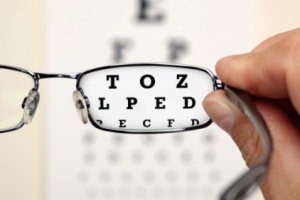 Call it the Ray Charles Effect: a young child who is blind develops a keen ability to hear things that others cannot.
Call it the Ray Charles Effect: a young child who is blind develops a keen ability to hear things that others cannot.
Researchers have long known this can happen in the brains of the very young, which are malleable enough to re-wire some circuits that process sensory information.
Now researchers at the University of Maryland and Johns Hopkins University have overturned conventional wisdom, showing the brains of adult mice can also be re-wired to compensate for a temporary vision loss by improving their hearing.
The findings, published Feb. 5 in the peer-reviewed journal Neuron, may eventually lead to treatments for people with hearing loss or tinnitus, said Patrick Kanold, an associate professor of biology at UMD who partnered with Hey-Kyoung Lee, an associate professor of neuroscience at JHU, to lead the study.
When adult mice were kept in the dark for about a week, neural networks in the auditory cortex, where sound is processed, strengthened their connections from the thalamus, the midbrain's sensory switchboard. As a result, the mice developed sharper hearing.
Kanold explained that there is an early “critical period” for hearing, similar to the better-known critical period for vision. The auditory system in the brain of a very young child quickly learns its way around its sound environment, becoming most sensitive to the sounds it encounters most often. But once that critical period is past, the auditory system doesn’t respond to changes in the individual’s soundscape.
Kanold, an expert on how the brain processes sound, and Lee, an expert on the same processes in vision, thought the adult brain might be flexible if it were forced to work across the senses rather than within one sense. They used a simple, reversible technique to simulate blindness: they placed adult mice with normal vision and hearing in complete darkness for six to eight days.
After the adult mice were returned to a normal light-dark cycle, their vision was unchanged. But they heard much better than before.
The researchers tested neurons in a middle layer of the auditory cortex that receives signals from the thalamus, a part of the midbrain that acts as a switchboard for sensory information. The neurons in this layer of the auditory cortex, called the thalamocortical recipient layer, were generally not thought to be malleable in adults.
But the team found that for the mice that experienced simulated blindness these neurons did, in fact, change. In the mice placed in darkness, the tested neurons fired faster and more powerfully when the tones were played, were more sensitive to quiet sounds, and could discriminate sounds better. These mice also developed more synapses, or neural connections, between the thalamus and the auditory cortex.
The fact that the changes occurred in the cortex, an advanced sensory processing center structured about the same way in most mammals, suggests that flexibility across the senses is a fundamental trait of mammals’ brains, Kanold said.
In the next phase of their five-year study, Kanold and Lee plan to look for ways to make the sensory improvements permanent, and to look beyond individual neurons to study broader changes in the way the brain processes sounds.
The National Institutes of Health funded this research through National Eye Institute (NEI) Grant R01EY022720 and National Institute of Neurological Disorders and Strokes (NINDS) Grant R21NS070645.
The research paper, “Cross-modal induction of thalamocortical potentiation leads to enhanced information processing in the auditory cortex,” Emily Petrus, Amal Isaiah, Adam P. Jones, David Li, Hui Wang, Hey-Kyoung Lee and Patrick O. Kanold, was published Feb. 5, 2014 in Neuron.
Source: University of Maryland, College of Computer, Mathematical, & Natural Sciences
